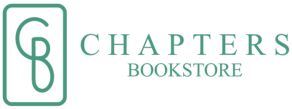Featuring contributions from an international group of art, architectural, design, and cultural historians, as well as journalists and curators, this book treats fascism as both a historical moment and as a major paradigm through which critics, curators, and the public at large have defined the present moment since World War II. It interweaves historical perspectives, critical theory, and direct accounts of exhibitions from the people who conceived them or responded to them most significantly in order to examine the main curatorial strategies, cultural relevance, and political responsibility of art exhibitions focusing on the Fascist period. Through close analysis, the chapter authors unpack the multifaceted specificity of art shows, including architecture and exhibition design; curatorial choices and institutional history; cultural diplomacy and political history; theories of viewership; and constructed collective memory, to evaluate current curatorial practice.
In offering fresh new perspectives on the historiography, collective memory, and understanding of fascist art and culture from a contemporary standpoint, Curating Fascism sheds light on the complex exhibition history of Italian fascism not just within Italy but in such countries as the USA, the UK, Germany, and Brazil. It also presents an innovative approach to the growing field of exhibition theory by bringing contributions from curators and exhibition historians, who critically reflect upon curatorial strategies with respect to the delicate subject of fascism and fascist art, into dialogue with scholars of Italian studies and art historians. In doing so, the book addresses the physical and cultural legacy of fascism in the context of the current historical moment.
- Publisher Name:Bloomsbury Publishing PLC
- Product Format:Paperback
- ISBN: 9781350229457
- Author:Hecker, Sharon
- Publication Date:2022-12-15
If you are not satisfied with your order in any way, get in touch. We have an excellent customer service record and we will do our best to ensure you are pleased with your purchase.
We are happy to refund a product if it is defective, within 30 days of purchase upon the return of your product. If you return a product to us and request a refund due to an error on our part we will be happy to pay for the postage cost to return it to us.
To be eligible for a return, your item must be in the same condition that you received it, unworn or unused & unread, and in its original packaging. You’ll also need the receipt or proof of purchase.
Please note, if you are requesting a refund based on an issue with condition we kindly ask you to provide a photo in order for us to best advise a suitable resolution.
To start a return, you can contact us at shop@chaptersbookstore.com. If your return is accepted, we’ll send you a return shipping label, as well as instructions on how and where to send your package. Items sent back to us without first requesting a return will not be accepted.
You can always contact us for any return question at shop@chaptersbookstore.com.
Damages and issues
Please inspect your order upon reception and contact us immediately if the item is defective, damaged or if you receive the wrong item, so that we can evaluate the issue and make it right.
Exceptions / non-returnable items
Certain types of items cannot be returned, like custom products or special orders. Unfortunately, we cannot accept returns on sale items or gift cards.
Exchanges
The fastest way to ensure you get what you want is to return the item you have, and once the return is accepted, make a separate purchase for the new item.
Refunds
We will notify you once we’ve received and inspected your return, and let you know if the refund was approved or not. If approved, you’ll be automatically refunded on your original payment method. Please remember it can take some time for your bank or credit card company to process and post the refund too.
Free Delivery in the Republic Of Ireland on all orders over €30. Standard Delivery Charge in Republic of Ireland of €5 for all orders below €30.
Delivery is subject to warehouse availability. Out-of-stock items will be shipped as soon as possible, upon arrival from the manufacturer/publisher. Please take shipping time into consideration.



![Rubin, Rick MUSIC Rick Rubin: The Creative Act: A Way of Being [2023] hardback](http://chaptersbookstore.com/cdn/shop/files/rubin-rick-rick-rubin-the-creative-act-a-way-of-being-2023-hardback-56888283332947_{width}x.jpg?v=1719073387)

![Moorhead, Joanna ART Joanna Moorhead: The Surreal Life of Leonora Carrington [2017] paperback](http://chaptersbookstore.com/cdn/shop/files/moorhead-joanna-joanna-moorhead-the-surreal-life-of-leonora-carrington-2017-paperback-57654797533523_{width}x.jpg?v=1727909581)
![Laing, Olivia LITERARY CRITICISM Olivia Laing: Funny Weather: Art in an Emergency [2021] paperback](http://chaptersbookstore.com/cdn/shop/files/laing-olivia-olivia-laing-funny-weather-art-in-an-emergency-2021-paperback-52950980428115_{width}x.jpg?v=1700130734)
![Geis, Patricia BARGAIN ART New Patricia Geis: Meet the Artist Vincent van Gogh: Meet the Artist! [2015] hardback](http://chaptersbookstore.com/cdn/shop/files/geis-patricia-patricia-geis-meet-the-artist-vincent-van-gogh-meet-the-artist-2015-hardback-9781616894566-58847872483667_{width}x.jpg?v=1726818615)